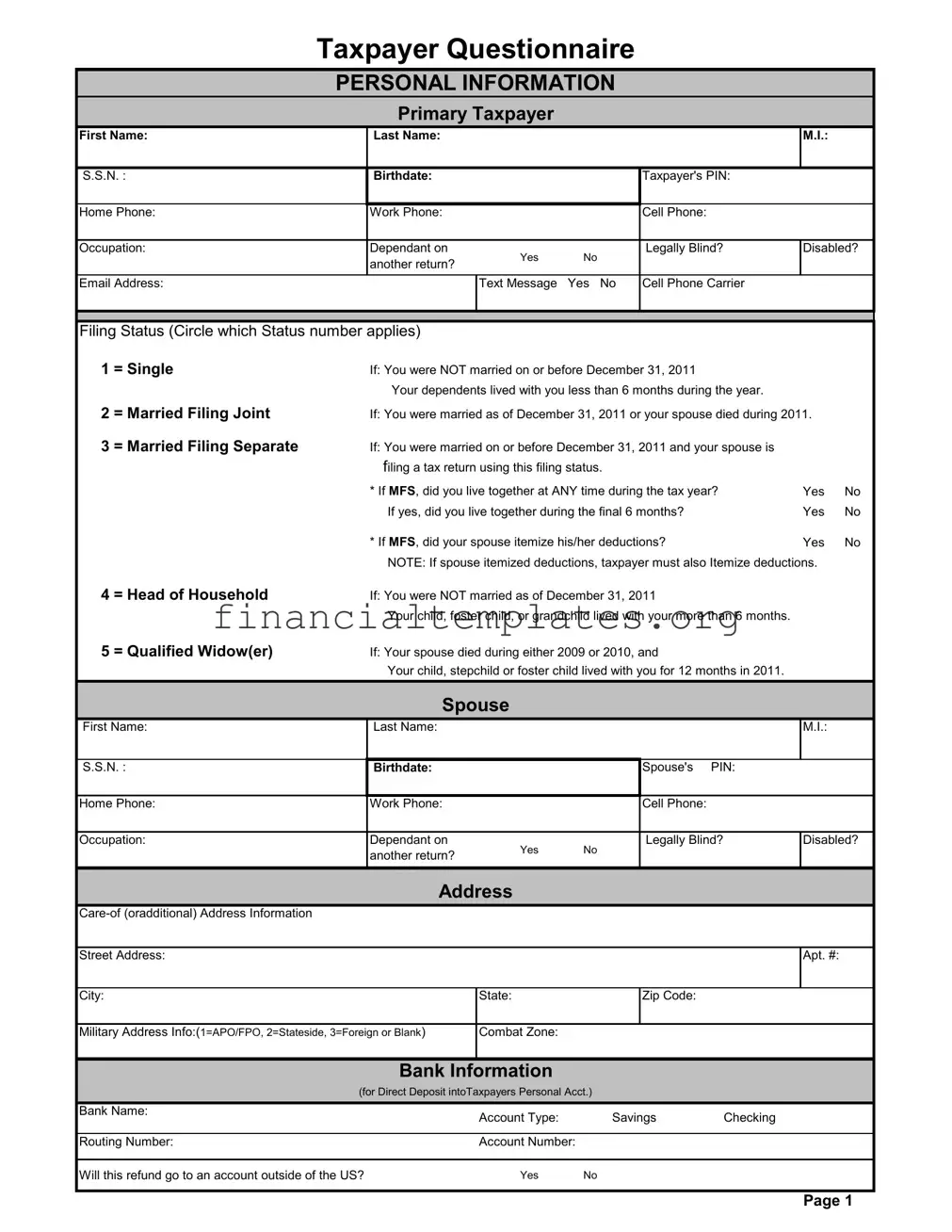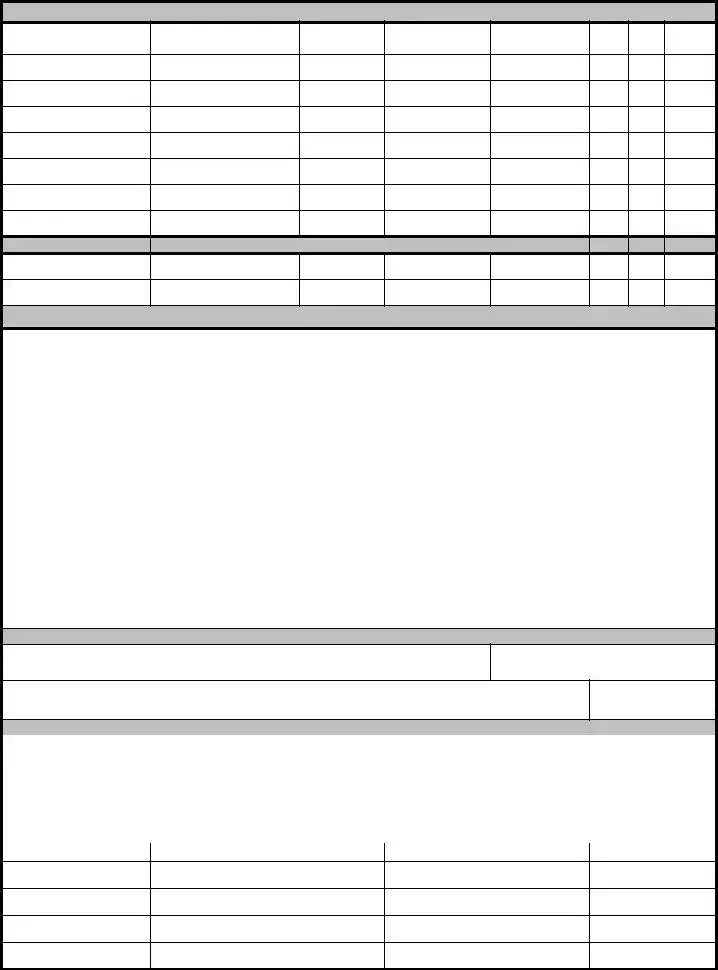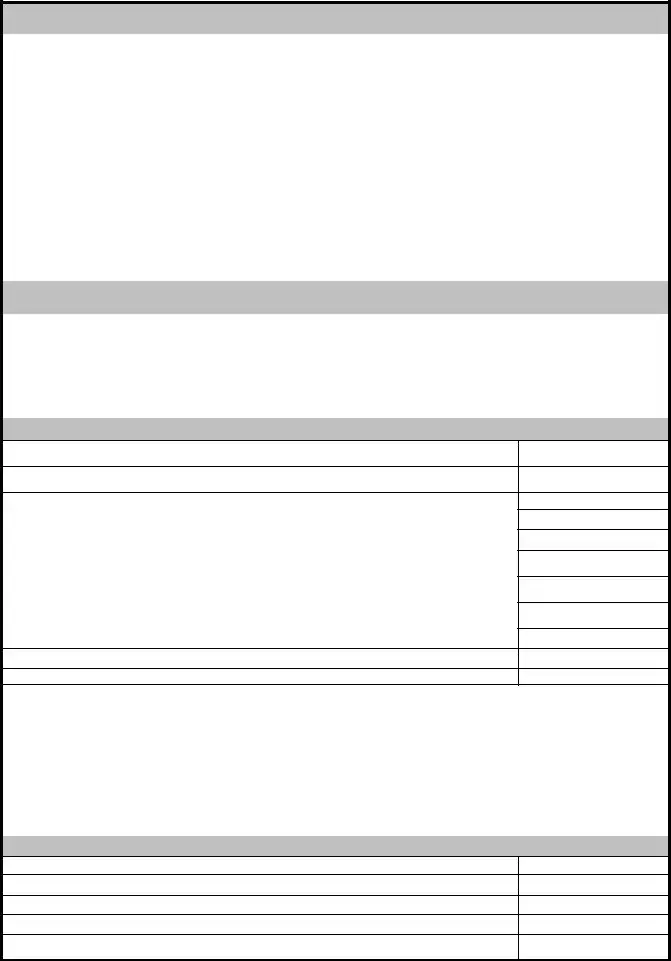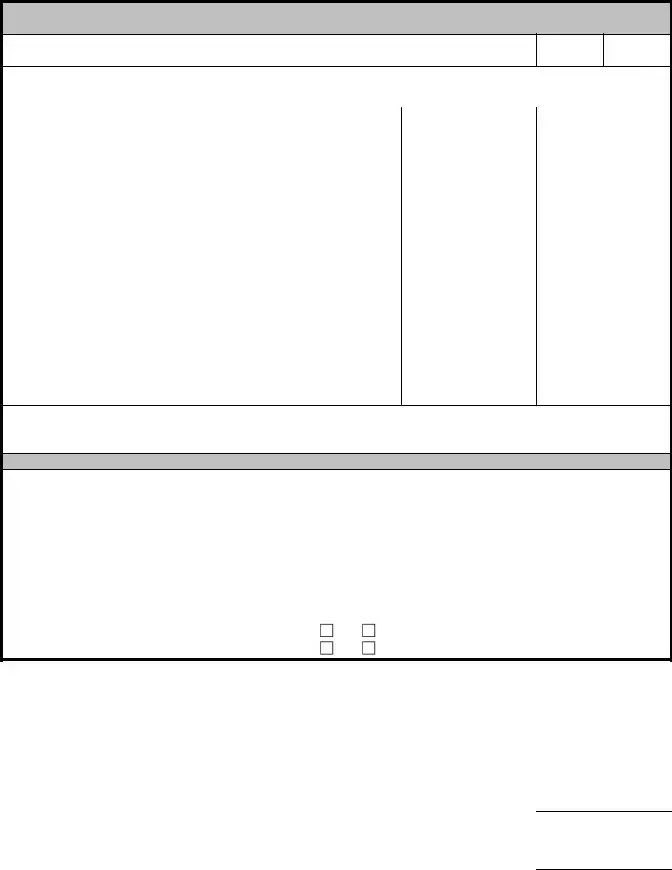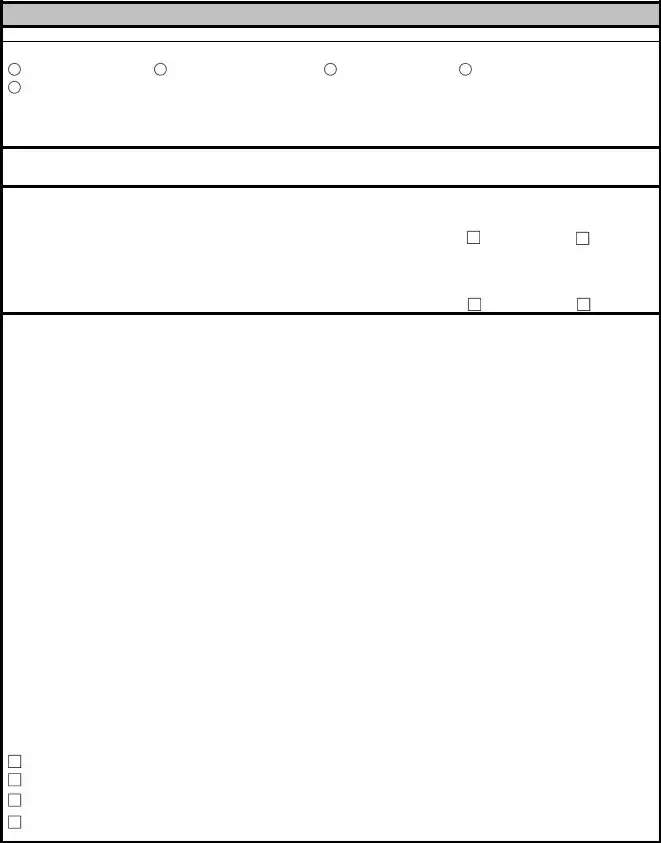The Taxpayer Questionnaire form shares similarities with the Form 1040, U.S. Individual Income Tax Return. Both documents collect exhaustive personal information, including social security numbers, incomes, deductions, and tax credits. Like the Taxpayer Questionnaire, Form 1040 asks for detailed financial information to determine the correct amount of tax owed or the refund due to the taxpayer. Each form plays a crucial role in ensuring taxpayers comply with their annual tax filing obligations.
Another document similar to the Taxpayer Questionnaire form is the W-4, Employee's Withholding Certificate. This form also collects personal information like marital status and dependents, used to determine the amount of federal income tax to withhold from employees' paychecks. Both forms deal with personal financial information aimed at ensuring accurate tax calculations, though the W-4 focuses on withholding, not annual filing.
The Schedule C (Form 1040), Profit or Loss From Business, also bears resemblance to the Taxpayer Questionnaire. Both require detailed financial information about income sources. For entrepreneurs and sole proprietors completing Schedule C, information about business earnings and expenses mirrors the income and deduction data collected in the Taxpayer Questionnaire, though the latter encompasses a broader range of personal financial details.
Form W-9, Request for Taxpayer Identification Number and Certification, is another related document, focusing on the collection of taxpayer identification information, such as social security numbers or employer identification numbers. Both the W-9 and the Taxpayer Questionnaire collect foundational identity data crucial for processing and reporting financial information to the IRS, albeit for different immediate purposes.
The Earned Income Credit (EIC) Worksheet, like the Taxpayer Questionnaire, is designed to determine eligibility for tax credits based on income, dependent information, and filing status. The Taxpayer Questionnaire's comprehensive approach to collecting personal and financial data aids in the calculation of EIC, among other credits, providing a parallel function to the dedicated worksheet.
Form 8862, Information to Claim Earned Income Credit After Disallowance, resembles the section of the Taxpayer Questionnaire related to tax credits. If a taxpayer's EIC claim was previously denied, Form 8862 requires detailed information to re-qualify. This process of providing thorough financial details to claim benefits underlines the shared emphasis on accurate taxpayer data between both documents.
Form 1099-INT, Interest Income, and the Taxpayer Questionnaire both deal with documenting specific types of income, with the former focusing exclusively on interest income. Taxpayers who fill out the questionnaire must report various income sources, including interest, similar to the way they would report this information on a 1099-INT. The overlap lies in the detail and type of financial data collected.
Form 8822, Change of Address informs the IRS about a change in address, a piece of information also requested in the Taxpayer Questionnaire. Both documents ensure the IRS has current personal information for correspondence and tax purposes, highlighting the importance of up-to-date data in the taxation process.
The Child Tax Credit and Credit for Other Dependents Worksheet, similar to relevant sections of the Taxpayer Questionnaire, assists in calculating credits based on dependent information. This comparison highlights a shared goal: determining the taxpayer's eligibility for specific tax benefits based on their personal and financial situation.
Lastly, the Direct Deposit Form for tax refunds aligns with the Taxpayer Questionnaire's section on bank information for refunds. Both solicit banking details to facilitate the direct deposit of any refunds owed to the taxpayer, illustrating a mutual focus on the efficient and secure transfer of funds.
